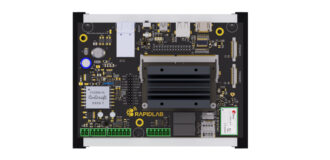17th September 2019


If you’re a business person involved in a digital disruption and transformation of your organization, one day you would have to understand what so called ‘mesh network’ really is.
Each day I meet business people who would love to follow the new trends and without getting too much into technical details, use them in everyday business. I dedicate this short article to them.
Star vs Mesh
Mesh network is nothing more than just another topology which has its own pros and cons. The way of connecting devices within a network might be done in several different ways. The most common is known as a star topology. Imagine your office or even a private house where you use a Wi-Fi router. That router is your gateway to the outside world, and at the same time, it is a central point of the mentioned star. All devices (laptops, mobile phones, printers, etc.) are connected to the router, and all network requests have to go thru that router. If you want to print a document, request goes from your laptop to the router and then it’s forwarded to the printer. When printer finishes the job, it answers to the router which transmits the answer to your laptop. Like on the picture shown below:

What happens if the router dies? Yes, you’re right – your laptop can’t talk to the printer anymore (ok, you might use a USB cable, but that’s not the case…). In other words – the central point of your star-like network is also a central, single point of failure. If it dies – everything becomes disconnected.
How about that mesh network? Imagine your office once more, but without a router. Let’s say your printer talks directly to the laptop and phone. Your phone talks to the laptop while your coffee machine communicates directly with your cup. Like on the diagram:

This example is a bit abstract for technical people, but I decided to use it to show how devices communicate within a mesh network clearly. In more real-life examples, we will usually discuss the devices of one kind like small IoT toys equipped with sensors.
The node & P2P
Time for at least some nomenclature: node – this is how we are going to call each of the devices connected to the network. In a mesh network, nodes communicate directly with each other. Such direct communication is called P2P (peer-to-peer).
Would you like to know more? We are implementing a wireless mesh network on a daily basis.
Wireless Mesh Network
Mesh network is nothing new, but now it’s really time for it to grow and hit the market. It is because of the usage of wireless radio technologies. Connecting things with cables is not fancy anymore. Still, it’s, of course, the most stable and reliable method, although today business needs to work everywhere and has to be mobile. So we need to take our node and connect it seamlessly whenever we need.
>What kind of wireless radios can be used to build a mesh network? Sooner or later, I would say – will be all of them. Moreover imagine one node including built-in WiFi, Bluetooth, and 5G radio modules. If smartly implemented, this one device could talk with other WiFi nodes as well as with Bluetooth and 5Gs. So the radio technology should be chosen based on project requirements, the distance between nodes, and the environment of usage. Technology is always just a tool of secondary importance which we use to build the solutions we need.
Nodes can retransmit the data. It means if one node receives a message, it can forward it to the neighbor nodes. They can do the same thing. Then if the technology is stable and reliable enough, in theory, we should be able to connect thousands of nodes on unlimited distance without the usage of cables and transmit any information between them.
Mesh networks pros & cons
| Pros | Cons |
| No more single point of failure | Technology is not mature and stable yet |
| There is no middle-man providing the network access (like mobile network provider) | At the moment cost might be higher than building a star topology network |
| Difficult to destroy working network (requires to destroy all nodes) | Establishing the mesh network is quite difficult and requires an expert knowledge |
| Thanks to the ability to retransmit data between nodes it is possible to create networks with thousands of nodes on unlimited distance | Responsiveness and capacity get lower when adding new layers |
| No gateways, no complex and expensive infrastructure |
Business usage
Technically, there are unlimited possibilities to implement wireless mesh networks within any industry. There is no central point of failure, which might be helpful in open areas or buildings liable to any natural disasters like floods or earthquakes. Also, large areas like mines, mountains, or open waters which are hardly coverable by WiFi or mobile networks could become wirelessly accessible via mesh nodes. Large buildings can be equipped with mesh nodes used for smart metering of air and light parameters as well as for wireless voice transmission.
Wireless mesh networks are part of digital disruption and transformation process of the world we know. They should be considered whenever planning the implementation of IoT solutions as an alternative to traditional, star topologies.
See also:
Let’s stay in touch
Tell us about your IoT project and we’ll get back to you shortly.
Talk to our expert

Paweł Skiba
IoT Solution Architect


